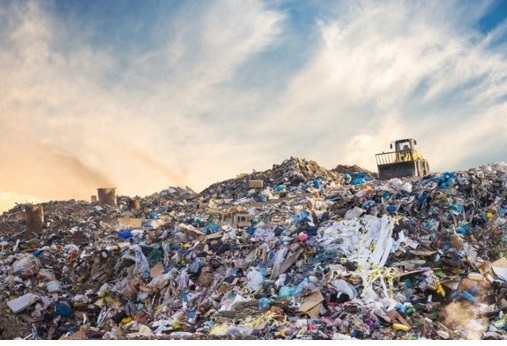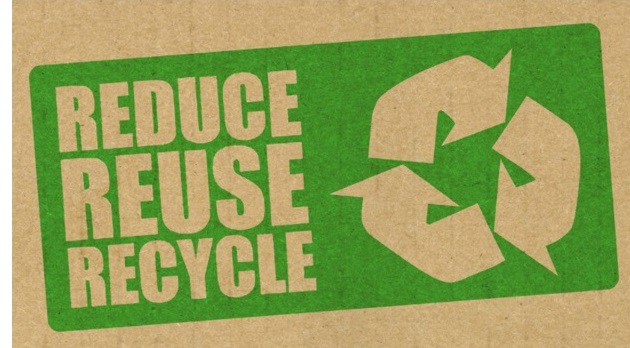The United States Environmental Protection Agency (EPA) defines packaging as products that are assumed to be discarded the same year the products they contain are purchased. Packaging is the product used to wrap or protect goods during shipping and storage. Every year, roughly 165 billion packages are shipped in the US. The COVID-19 pandemic has caused increased demands for packaging materials, such as plastics and cardboard. Packaging makes up a large portion of municipal solid waste (MSW) annually. In 2018, 82.2 million tons of packaging waste was generated which was 28.1% of the total waste generated during the year and this number continues to increase annually as the packaging demands increase.
Where does my packaging waste go?
Your packaging waste can end up in multiple places. Your packaging waste can be dumped in a landfill, can go into the ocean as pollution, can be combusted to generate energy, or can be recycled.
•Landfill - A landfill is a carefully designed and monitored structure that isolates trash from the surrounding environment. Landfills are designed not to break down trash, but rather, to bury it. Landfills are carefully filled, monitored, and maintained while they are active and for up to 30 years after they are closed.

•Marine Pollution – Marine pollution is waste that is washed or blown into the ocean. The waste can damage the environment, and cause harm to marine animals and land animals. Plastic waste is the most problematic marine pollutant because it takes hundreds of years to decompose. Marine life can get tangled or injured in waste. Marine life can also mistake microplastics for food sources and eat the microplastics, which will eventually become a part of the animal’s tissue. As small marine life is eaten by larger ones, the microplastic pollution moves up the food chain and becomes part of the food that humans eat. The greatest collection of solid waste, including packaging products, in the ocean, can be found in the Great Pacific Garbage Patch or Pacific Trash Vortex. The Great Pacific Garbage Patch is in the North Pacific Ocean between California and Hawaii. The Great Pacific Garbage Patch is about 1.6 million square kilometers (617,763 square miles) in size.

•Combustion to generate energy - Waste-to-energy plants burn MSW to generate electricity. MSW is burned in a large incinerator with a boiler and a generator for producing electricity. For every 100 pounds of MSW in the United States, about 85 pounds can be burned as fuel to generate electricity.

•Recycling - Recycling is the process of collecting and processing materials that would otherwise be thrown away as trash and turning them into new products. It is estimated that up to 75% of all waste can be recycled or repurposed. Making new products from recycled materials typically requires less energy than making them from new raw materials. Based on the national Recycling Economic Information (REI) Study of 2016, in a single-year, recycling activity in the United States account for 681,000 jobs, $37.8 billion in wages, and $5.5 billion in tax revenues.

Benefits of Recycling
•Reduces the amount of waste sent to landfills and incinerators
•Conserves natural resources such as timber, water, and minerals
•Increases economic security by tapping a domestic source of materials
•Prevents pollution by reducing the need to collect new raw materials
•Saves energy
•Supports American manufacturing and conserves valuable resources
•Helps create jobs in the recycling and manufacturing industries in the United States
All the packaging materials below are NOT recyclable!
Mail packaging
• Bubble wrap
• Padded shipping envelopes
• Styrofoam
• Packing peanuts
• “Compostable” packing peanuts
• Air bags
• Ice pack packaging from meal prep kits like Blue Apron and HelloFresh
Food packaging
• Styrofoam meat trays
• Tetra-pak (example: shelf-stable liquids containers such as chicken broth and wine containers)
• Hot dog wrappers that are shiny on one side and paper on the other
• Saran wrap
• Stiff/crinkly plastic (example: cereal bags and cracker sleeves)
• Juice and fruit puree squeeze pouches
• Chip bags, candy bar wrappers, condiment packets, and etc…
• Straws & Plastic utensils (even if it’s labeled biodegradable or “compostable plastic”)
• Take-Out containers (example: Chinese take-out boxes)
• Net Bags (found around fruits and vegetables such as tangerines and avocados)
• Produce stickers
• Tea bags that have plastic in the tea bag material
• Keurig-type coffee pods
Conclusion
As packaging demands increase due to the COVID-19 pandemic, consumers must think about the long-term effects of all the packaging from online shopping waste. We will be drowning in a sea of packaging waste if we don’t do something differently soon. In 2018, the recycling rate of packaging and containers was 53.9% in the United States. There is still an opportunity to increase the recycling rate by 21.1% to bridge the gap between the estimated rate of 75% for waste. Both consumers and retailers are starting to wake up to the packaging issue at hand. Amazon has initiated a Frustration-Free Packaging Program that is designed to produce less waste and reduce packaging rage. In this program, envelopes replace boxes for smaller shipments, and some products are shipped in their original packaging instead of doubling the packaging. Amazon has noted that they have reduced close to 250,000,000 tons of packaging material from 2007 to 2017 from the Frustration-Free Packaging Program. Companies like Limeloop are embracing the concept of responsible packaging. Limeloop is creating durable shipping pouches that are recycled from billboard wraps and intended to be reused as many as 2,000 times. We as consumers and retailers must continue to think outside the box of traditional packaging so that we can do our part to reduce the amount of packaging waste created each year.
References
https://www.epa.gov/facts-and-figures-about-materials-waste-and-recycling/containers-and-packaging-product-specific-data
https://www.packaging-gateway.com/news/covid-19-demand-increase-various-packaging-formats/
https://www.forbes.com/sites/jonbird1/2018/07/29/what-a-waste-online-retails-big-packaging-problem/?sh=2f891f3c371d
https://en.wikipedia.org/wiki/Packaging_waste
https://en.wikipedia.org/wiki/Great_Pacific_garbage_patch
https://www.recyclesmart.org/packaging
https://www.zmescience.com/other/feature-post/why-is-recycling-so-important-the-dirty-truth-behind-our-trash/
https://www.epa.gov/recycle/recycling-basics
https://www.openaccessgovernment.org/what-are-the-alternatives-to-landfill/53719/
https://www.nationalgeographic.org/encyclopedia/marine-pollution/
https://www.eia.gov/energyexplained/biomass/waste-to-energy-in-depth.php


































